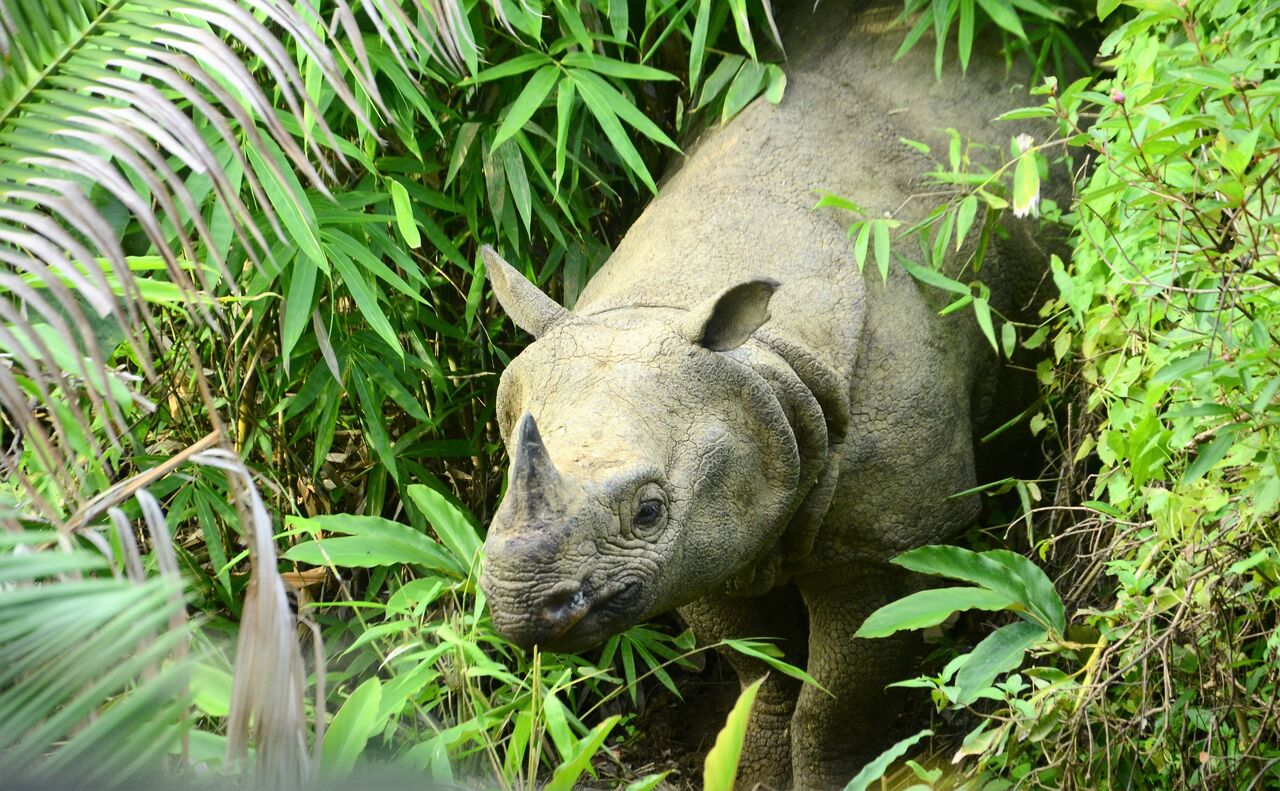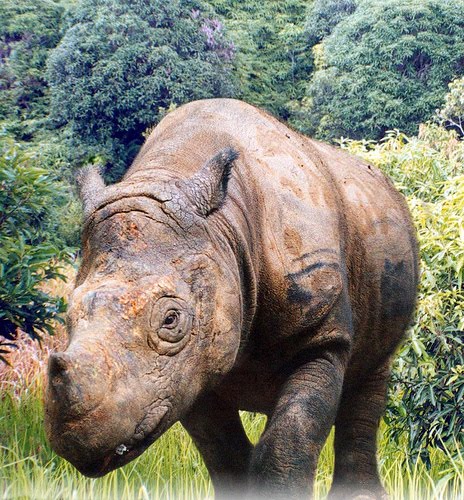

Sometimes, they drag the dung with their hind foot for several meters. Instead of sound, the Javan Rhino communicates with the sense of smell using dung heaps and urine spraying. Unlike the other rhinos that are very vocal, the Javan Rhino is a quiet animal which has made them difficult to study.Do not approach a Javan Rhino! They are aggressive and will attack humans charging their long, sharp lower teeth into victims and potentially causing dangerous, often deadly wounds.That equals the red meat an average American eats in a whole year. It is estimated that they eat up to 50kg (110lb) every day. They eat a huge variety of different leaves, young shoots and twigs that grow in unshaded areas and they eat a lot of it. Javan Rhinos are herbivores (only eat vegetation).


The Rhino uses its horn to scrape mud from the sides of wallows, to get food from plants and to protect its head when travelling through thick vegetation. That is just over the size of a pen or the width of an A4 piece of paper. They have a single horn measuring up to 20 cm long.
JAVAN RHINOCEROS. SKIN
However, as they spend the day bathing in mud holes most of the time their skin will appear black. They have grey or grey- brown skin with thick folds making them appear like they are wearing armour for battle.That is about double the weight of an average car. They are smaller than the Indian Rhino but still weigh about 1.5- 2.3 tonnes.In the wild they can live up to 35-40 years.Unlike humans that have evolved steadily to the way we look today, the Javan Rhino is believed to have remained the same for over one million years!.It used to roam all over Asia from northern India, through to Thailand, Cambodia, Laos and another Indonesian island, Sumatra. The Javan Rhino, also known as the ‘Sunda Rhino’ or the ‘lesser one-horned rhino’, is only found in the lowland tropical rainforests of one location in the world, the Ujung Kulon National Park in Java, Indonesia.


 0 kommentar(er)
0 kommentar(er)
